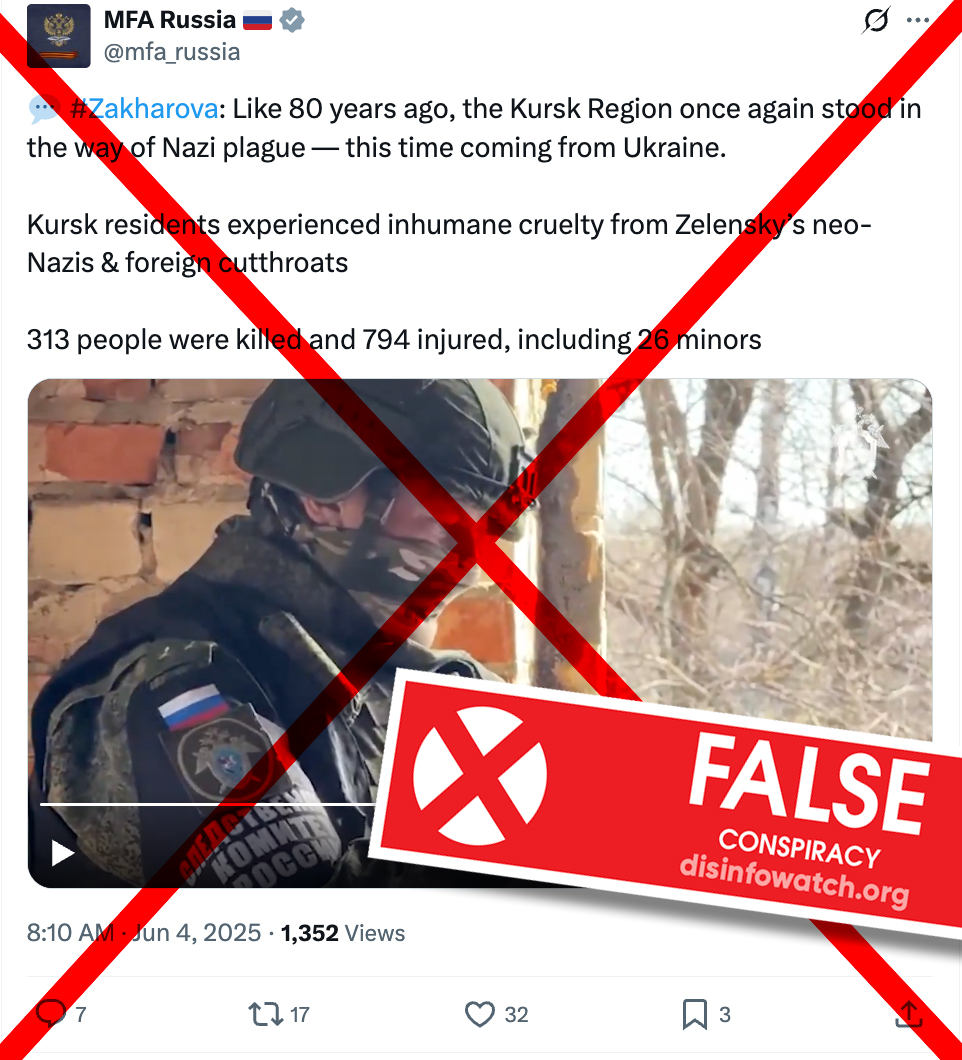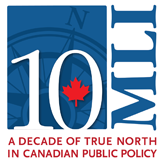The Claim:
In a Tweet posted to the Russian Ministry of Foreign Affairs Account, spokeswoman Maria Zakharova is quoted saying that “like 80 years ago, the Kursk Region once again stood in the way of Nazi plague — this time coming from Ukraine. Kursk residents experienced inhumane cruelty from Zelensky’s neo-Nazis & foreign cutthroats. 313 people were killed and 794 injured, including 26 minors.”
The Facts:
- No evidence Ukraine attacked Kursk civilians
- There is no verified or credible evidence that Ukraine directly attacked civilians in the Kursk region.
- Independent war monitors, international media, and OSINT investigators have not corroborated this claim. There is no footage, satellite imagery, or credible reports support such an event on the scale described.
- Kursk is a Russian border region frequently used for military staging
- While Kursk lies near Ukraine and has been used as a military base for Russian operations, Ukrainian drone and sabotage attacks in this region—when they occur—target military infrastructure, not civilians.
- Accusation of ‘neo-Nazis’ is a tired and well worn Russia propaganda trope
- There is no evidence that Ukraine is governed by neo-Nazis. President Volodymyr Zelenskyy is Jewish and lost family in the Holocaust.
- International assessments, including from Holocaust memorial institutions, reject Russia’s claim that Ukraine is a neo-Nazi state. In fact, far-right parties hold no single seat in Ukraine’s parliament, unlike many other Western nations.
Narrative Context:
This tweet is part of a broader Russian state disinformation campaign designed to:
- Justify Russian aggression by evoking WWII nostalgia and trauma
- Drawing a parallel between Nazi Germany and modern Ukraine is a common Kremlin narrative. The mention of the Kursk battle (1943) is symbolic — it implies Russia is again the victim and defender against fascism.
- Dehumanize Ukrainians and foreign supporters
- By referring to Ukrainians and foreign volunteers as “neo-Nazis” and “cutthroats,” the tweet seeks to justify retaliatory violence and frame any attack against Ukraine or its allies as righteous self-defense.
- False atrocity propaganda to mobilize domestic support
- Inventing or exaggerating atrocities allegedly committed by Ukraine is aimed at stoking nationalist outrage inside Russia and maintaining public support for the war.
- Shift focus away from real Russian war crimes in Ukraine
- These disinformation narratives often serve as deflection tactics, projecting the Kremlin’s own crimes onto others — especially as international investigations into Russian atrocities in Bucha, Mariupol, and elsewhere proceed.
- It also deflects attention away from Russia’s nightly bombardment of Ukrainian civilians and infrastructure including schools, hospitals, apartment blocks and busy town squares.
This tweet is classic Kremlin disinformation. It uses emotionally manipulative language, false historical analogies, and fabricated casualty figures to frame Ukraine as the aggressor and justify Russian actions. No credible source substantiates the claims made, and the narrative is aligned with long-standing Russian propaganda aimed at demonizing Ukraine and whitewashing its own war crimes.


